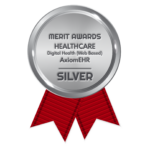It’s critical that health care providers have access to the technical capabilities they need to improve patient care, especially when treating complex conditions. That’s what the upcoming OPEN MINDS Management Best Practices Institute is all about – providing a forum for executives to better understand and leverage technology that will help them stay ahead of the curve – and why we’re proud to be a partner of the event.
Electronic Health Records (EHRs) are one such best practice, or tool, for improving quality of care and patient outcomes. EHRs can be even more helpful when coordinating care among various teams responsible for treating a patient with disparate comorbidities such as diabetes, cardiovascular disease or a host of other conditions. The reason is that EHRs streamline communication and ensure one accurate view of the patient and his or her care plan.
However, according to research published earlier this year in JAMA Internal Medicine, U.S. physicians who use EHRs spend an average of 1.84 hours a day completing documentation outside of work hours. What’s more, 57% of physicians said that time spent documenting reduces the time they can spend with their patients. This is a real problem for health care providers, their patients and the industry as a whole.
At HiMS, our award-winning integrated EHR software, AxiomEHR, and AxiomMobile, our mobile communications app, help health care providers more efficiently care for patients with complex comorbidities. As value-based care tools, Axiom and AxiaGram support behavioral health professionals who regularly coordinate with care teams across primary and secondary care, and emergency and outpatient care. Further, they are designed to optimize care by providing an accurate and complete picture of a patient’s treatment, enabling quick access to their records and securely sharing electronic information with other clinicians.
In other words, our user-friendly EHR software platform helps health care providers navigate key patient information without having to sift through the clutter. Here’s how:
- Real-time alerts. Clinical alerts allow providers to receive real-time notifications for high-risk patients. These ensure that medications, lab orders or other clinical measures get to the right place, at the right time.
- Chat functions. When different care teams need to coordinate, or a physician wants to check in on a patient, AxiaGram’s chat function set up a care team to surround a patient with real-time conversations and easy access during crisis. What’s more, the app interface is familiar and easy to use.
- Order sets. Axiom and AxiaGram make it easy for providers to easily set up order sets for complex scenarios, ensuring that the patient receives the best care at the single press of a button.
Health care providers can benefit from an EHR that’s built to help them work smarter, not harder. As a result, they will have more time to manage the care and outcomes of patients. Now that’s what we call a best practice.





